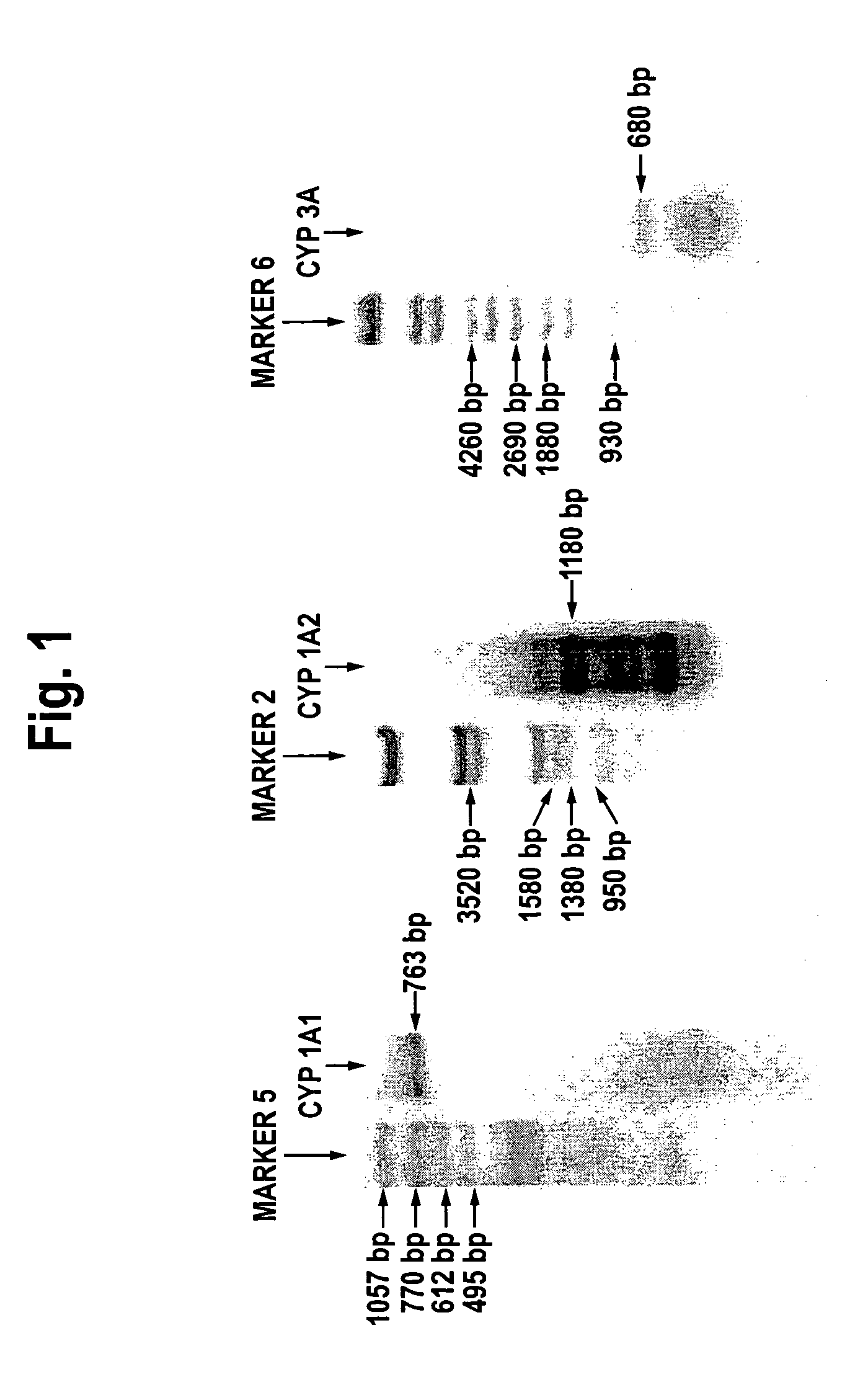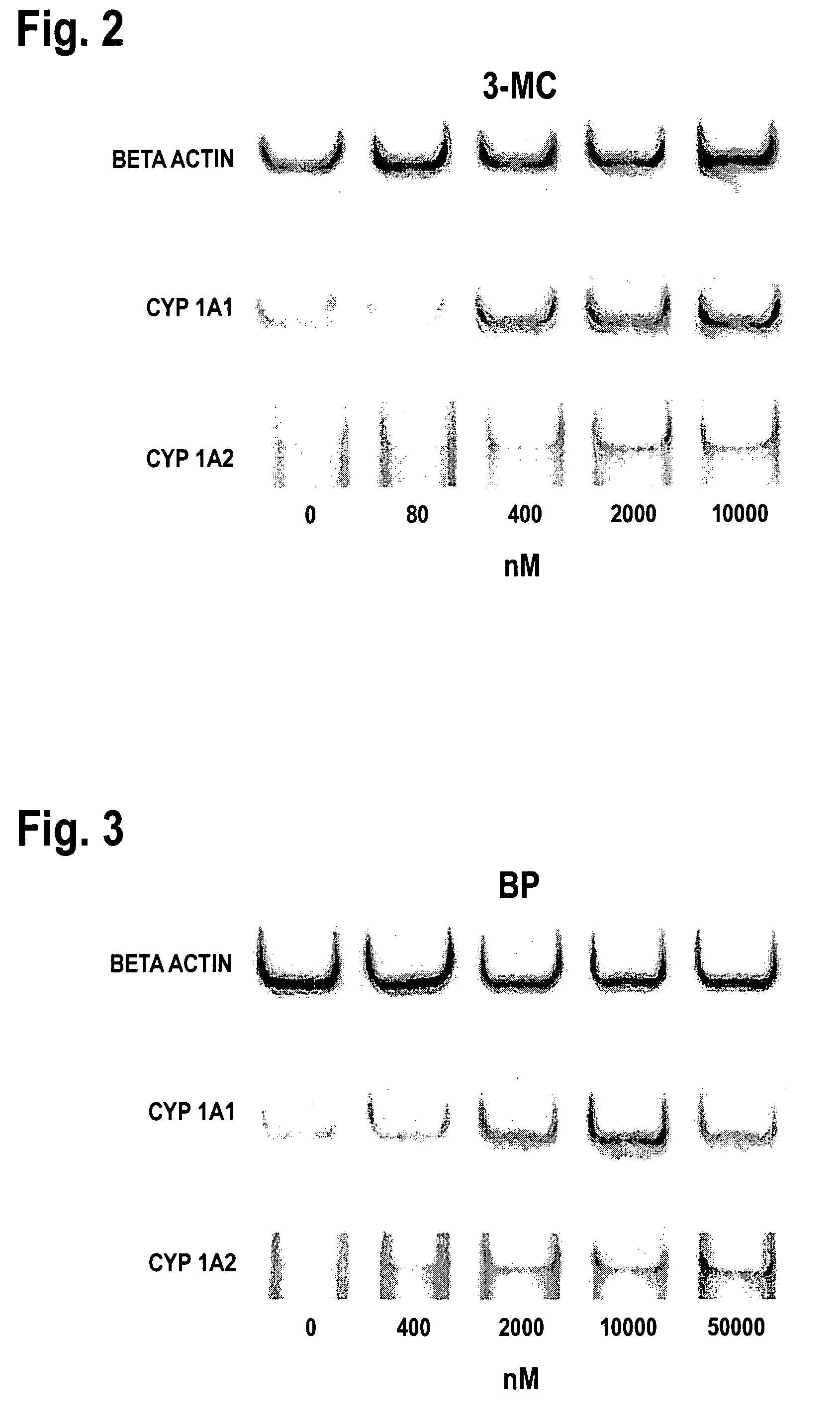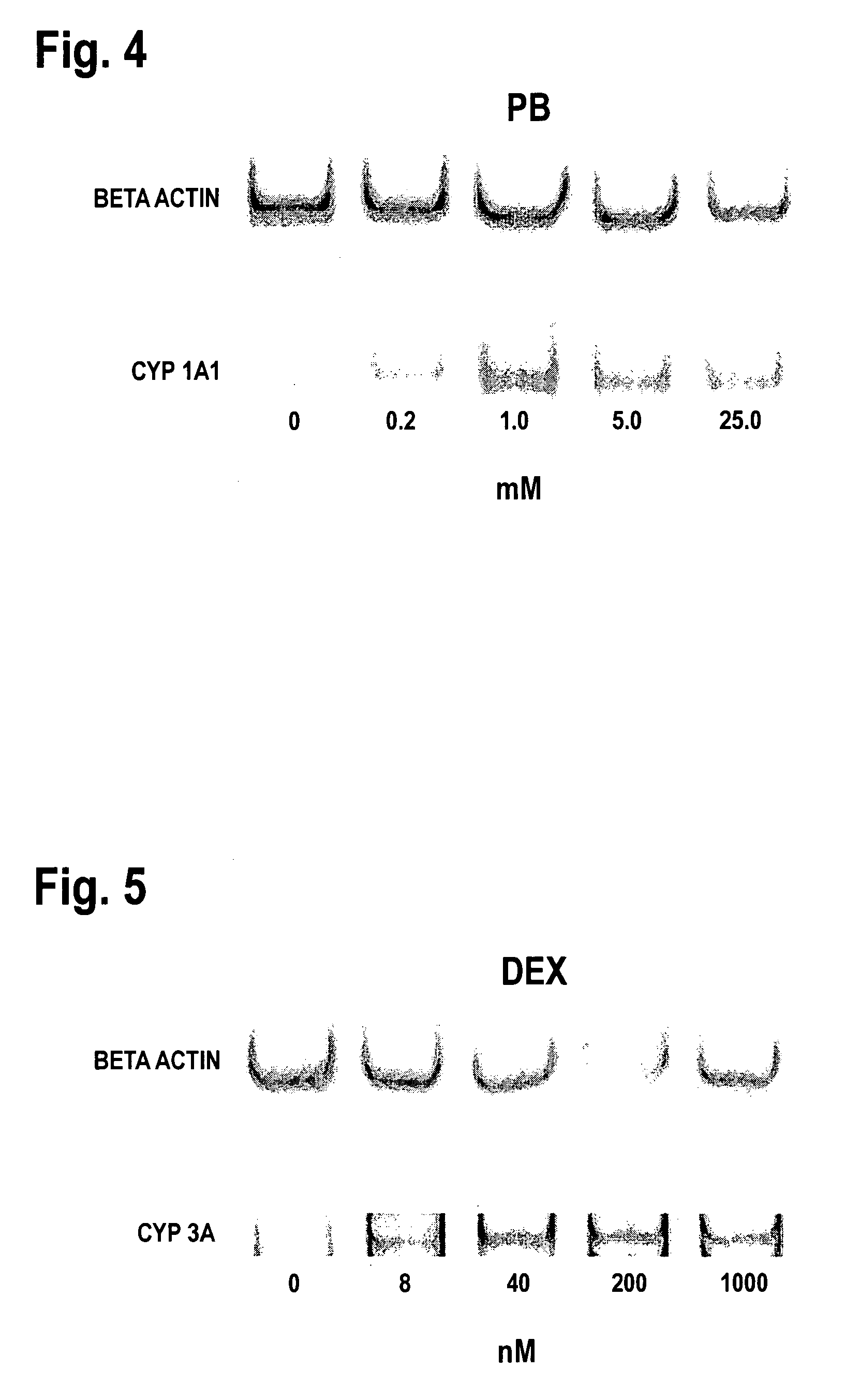Human derived immortalized liver cell line
- Summary
- Abstract
- Description
- Claims
- Application Information
AI Technical Summary
Benefits of technology
Problems solved by technology
Method used
Image
Examples
example 1
Establishment of a Hepatocyte Culture
[0063]A well-established method was used to establish an immortalized cell culture by introducing the SV 40 T antigen gene (M. Miyazaki et al., Experimental Cell Research, 206, 27–35 (1993)). The liver was extirpated from a human fetus which died at 21 weeks of gestation; primary cells of hepatic parenchyma were separated by the commonly known collagenase perfusion method. These cells were sown to and cultured on Williams' medium (Nissui Pharmaceutical) supplemented with 10% fetal bovine serum. After 24 hours of cultivation, the SV 40 T antigen gene was introduced by the lipofection method using the plasmid pSV3Neo (P. J. Southern and P. Berg, J. Mol. Appl. Genet., 1, 327–341). For lipofection and subsequent procedures, a serum-free complete synthetic medium (ASF104, Ajinomoto) was constantly used as the culture medium. At 3 days after transfection, passage culture was conducted to promote the growth of hepatocytes, followed by 2 more days of cul...
example 2
Determination of the Drug-Metabolizing Enzyme Activity of the OUMS-29 Culture
[0064]OUMS-29 cells becoming confluent after 5 to 7 days of cultivation on ASF104 medium were harvested, suspended in 0.1 M phosphate buffer (pH 7.6), and disrupted using an ultrasound generator; this suspension was used as the enzyme source to determine enzyme activity as described below.
(1) Cytochrome P450 Reductase Activity
[0065]Determinations were made basically by the method described in Biological Pharmacology, 37, 4111–4116, 1988. Specifically, cytochrome P450 reductase activity was determined on the basis of cytochrome C reduction in the presence of NADPH (reduced nicotinamide adenine dinucleotide phosphate) and an enzyme source of OUMS-29 origin with cytochrome C as the substrate. As a result, the enzyme source of OUMS-29 culture origin exhibited an enzyme activity of 8 units, taking the activity for reducing 1 nanomol of cytochrome C per milligram of protein per minute as 1 unit.
(2) Glucurosyl Tra...
example 3
Expression of the Cytochrome P450 Gene
[0068]The expression of cytochrome P450 in the OUMS-29 culture can be analyzed by assessing the level of mRNA content by the commonly known RT-PCR method using DNA primers specific to different types of cytochrome P450. These primers can be prepared from the sequences of the respective types of cytochrome P450 available from the Gene Bank database. The accession numbers at the Gene Bank are K03191 for CYP1A1, M55053 for CYP1A2, J02625 for CYP2E1, J04449 for CYP3A4, J04813 for CYP3A5, and D00408 for CYP3A7. The individual primers used were
5′-ATGCTTTTCC CAATCTCCAT GTGC (SEQ ID NO:1) and
5′-TTCAGGTCCT TGAAGGCATT CAGG (SEQ ID NO:2) for CYP1A1,
5′-GGAAGAACCC GCACCTGGCA CTGT (SEQ ID NO:3) and
5′-AAACAGCATC ATCTTCTCAC TCAA (SEQ ID NO:4) for CYP1A2 and
5′-ATGGCTCTCA TCCCAGACTT G (SEQ ID NO:5) and
5′-GGAAAGACTG TTATTGAGAG A (SEQ ID NO:6) for CYP3A.
[0069]Regarding annealing conditions for the RT-PCR method, the annealing temperatures were 55° C. for CYP1A1, 65...
PUM
 Login to View More
Login to View More Abstract
Description
Claims
Application Information
 Login to View More
Login to View More - R&D
- Intellectual Property
- Life Sciences
- Materials
- Tech Scout
- Unparalleled Data Quality
- Higher Quality Content
- 60% Fewer Hallucinations
Browse by: Latest US Patents, China's latest patents, Technical Efficacy Thesaurus, Application Domain, Technology Topic, Popular Technical Reports.
© 2025 PatSnap. All rights reserved.Legal|Privacy policy|Modern Slavery Act Transparency Statement|Sitemap|About US| Contact US: help@patsnap.com



